In Reaping the Rewards, I take a look at the finished result of a crowdfunding campaign. Dice Throne was funded through Kickstarter in February 2017, and began shipping to backers this month—slightly later than the anticipated November delivery date, but still an impressive timeframe.
What Is Dice Throne?
Dice Throne is a game for 2 to 6 players, ages 8 and up, and takes about 20–40 minutes to play. It’s available for pre-order now from Roxley Games for $45; if you order before December 25, you can expect it shipped mid-January. It should be available in stores in late January 2018. The game is a beat-’em-up and has cartoon violence, but is kid-appropriate if you’re okay with that. Some of the heroes are more complex than others to play.
Dice Throne is GeekDad Approved!
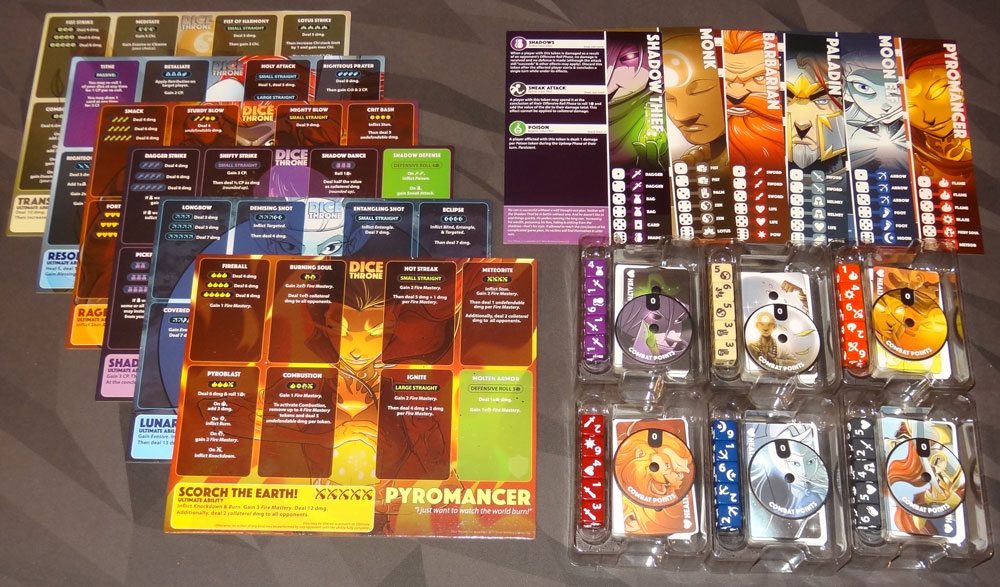
Dice Throne Components
- 6 sets of hero components, each containing:
- Hero board
- Hero leaflet
- Turn Order card
- 5 custom dice
- 32 cards
- Combat Point dial
- Health dial
- 72 Status Effect tokens

The components are very nice. The hero boards are just large cardboard sheets with various actions printed in rectangles, along with some artwork in the background. The back side of the hero board shows the art without the overlays so that it can really show off the artwork, which is very cool. The illustrations of the characters look like something out of a cartoon or comic book. I appreciate the fact that there are several portraits of each character: on the board, the leaflet, the CP dial, health dial, and back of the cards. They could have just used the same artwork on everything, but this way you get a little more variety.
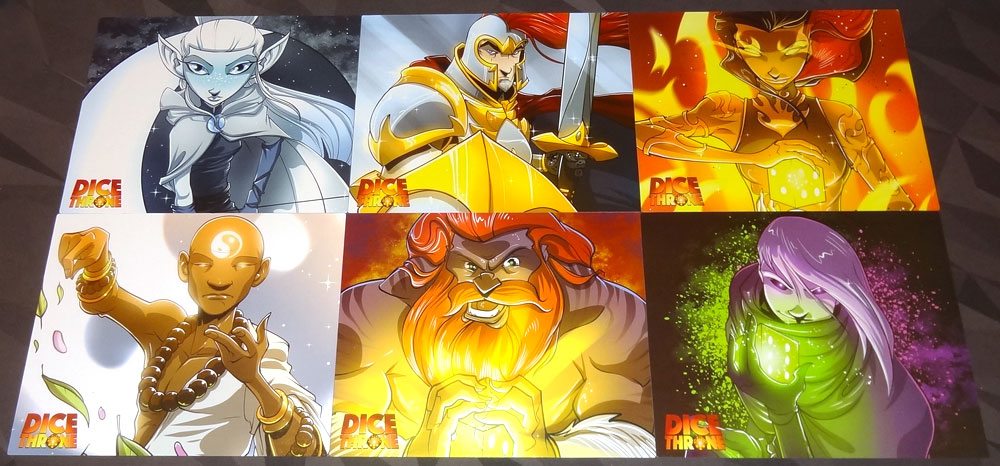
The cards themselves are functional but a little less exciting to look at. Each of your hero powers on your board shows a combination of dice icons and the effect it has; some cards upgrade those powers and are placed on top of the board. Aside from the dice icons, it’s all just text, which means most of your board is just text, with a little bit of character art peeking through (until you cover that with status effect tokens). It might have been nice to have illustrations for the various attacks and moves that your character is making, though that would have certainly been a lot more artwork.

The “leaflets,” as the rulebook calls them, are cardstock info sheets about each hero. It shows the six faces of your dice, along with all of your status effects and what they do. There’s also a little bit of story/strategy at the bottom. The characters all have a different combination of status effects, and some players have more status effect tokens than others. There’s some overlap, but most of the effects are unique to a particular character.
The tokens are small cardboard discs that punched out easily and have little icons on them; most are different colors as well. The only ones that are a little hard to read are the “Knockdown” and “Burn” tokens, both of which are yellow (with a white icon) and can be a little hard to distinguish from across the table.
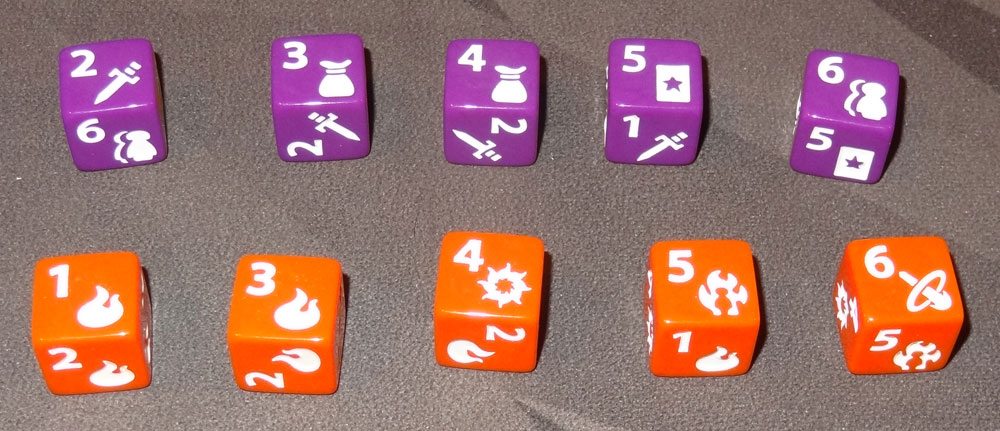
The dice are great: they’re custom six-sided dice, and each player has their own set. Each die face has a number from 1 to 6, as well as an icon. The distribution of the icons also varies from hero to hero: the two simpler heroes only have 3 different icons each, and the rest have 4 icons each. The dice are engraved and painted.
The dials are made of cardboard with plastic grommets: the CP dial goes from 0 to 15 and is a single dial; the health dial has two dials and can range from 00 to 99. They work pretty well, though I noticed that sometimes because the health dials touch each other, it’s easy to rotate both dials when you only mean to turn one of them.
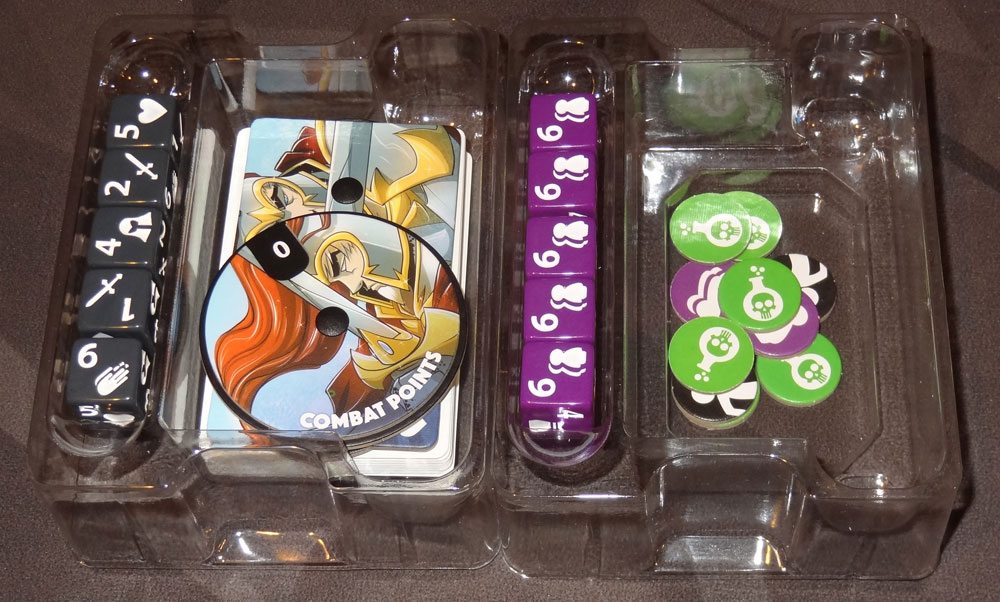
I like the plastic box inserts. There’s actually one small tray for each character, with a slot for the dice on the side, and a wider well that holds the cards and dials. Under that well there’s a smaller recessed area that holds the status tokens. Since the trays are separate, it’s easy to hand one to each player, and the game is basically set up and ready to go when you open the box. The box is sized exactly to hold all six inserts (with the player boards resting on top of them).
Overall, the component quality is quite nice; the game is colorful and eye-catching and looks great on the table.
How to Play Dice Throne
You can download a pre-production copy of the rulebook here.
The Goal
The goal of the game is to eliminate all of your opponents. (Thematically, you are competing for the throne of the Mad King, who has ruled for a thousand years and has never lost… but in the game you only fight against the other champions, and not against the Mad King himself. Maybe it’s presumed that you lose.)

Setup
Give each player a set of hero components. There are a few ways to play: free-for-all, or in teams of 2 or 3, but in general setup is similar, but starting health is lower when there are more players. Each player sets their CP dial to 2, and their health to the starting health based on the number of players. (Your maximum health is 10+ the starting health.) Each player shuffles their own deck of cards and draws 4 cards.
Gameplay
Your turn consists of these phases:
- Upkeep
- Income
- Main Phase 1
- Offensive Roll
- Targeting Roll (with more than 2 players)
- Defensive Roll
- Main Phase 2
- Discard
Upkeep: Apply any applicable status effects. For instance, if you have Poison, you take 1 damage.
Income: Gain 1 CP and draw 1 card.
Main Phase 1: You may sell cards by discarding them for 1 CP each. You may play cards that have the “M” icon on them by paying CP for them. Some cards are one-time-use effects, and some are upgrades to abilities on your board. Effects are played and discarded, and upgrades go on your board in the relevant slot. If you upgrade an ability that has already been upgraded (e.g., from Level 2 to Level 3), then you only need to pay the difference in CP.

Offensive Roll: This is where you get to attack somebody! You get three rolls, Yahtzee-style, where you can keep some dice and re-roll the remainder. After you are finished rolling, you look at the icons you rolled and choose one of your powers to activate.
Targeting Roll: When playing with more than 2 players, you will roll a die to randomly determine which of your opponents is being attacked, if the power you’re using needs a specific target.
Defensive Roll: The player being attacked may use their defensive ability (shown in green on their hero board).
Main Phase 2: Same as before.
Discard: Discard/sell cards down to your hand limit of 6 cards.
That’s basically how the game runs. Of course, the various player abilities and card effects can mix that up a bit. Knockdown prevents a player from making an Offensive Roll unless they pay 2 CP. Entangled reduces a player to only 2 rolls instead of 3. And there are many cards that can manipulate dice rolls, yours or your opponents.
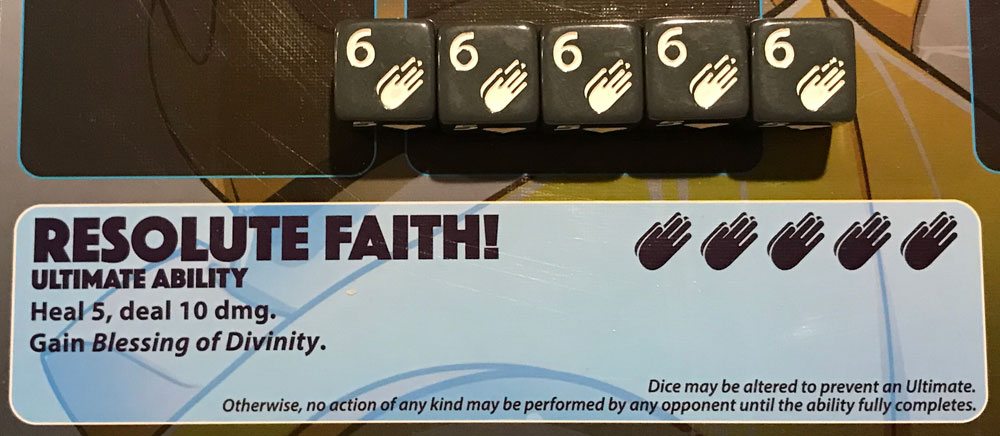
Each player also has an Ultimate Ability at the bottom of their board, which is activated if they roll all 6s. While opponents may try to play cards to change the dice, once the ability is actually triggered then nobody can do anything until it finishes resolving, which means you cannot use your defenses or status effects to help you against an Ultimate Ability.
Game End
If your health drops to 0, you are eliminated. The game ends when only one player remains. (It is possible to have a tie, if a player’s defense roll eliminates the attacker at the same time they get eliminated.)
Game Variations
There are a few variant ways to play.
For instance, when learning the game, you can play without CP and cards, using only the board powers and dice. However, this only really works with the Barbarian and Moon Elf—the other heroes have abilities that rely on using CP and cards, so they don’t work quite as well in the simplified version.
You can also have each player separate out their cards into upgrade cards and effect cards. When you draw cards, you may choose which deck to draw from—that way, you have a little more control over your strategy.
The other options are for team play vs. free-for-all. In a team game, each team shares a single health pool—when a team’s health is reduced to 0, the whole team is eliminated.

Why You Should Play Dice Throne
If you like rolling dice and beating up opponents, Dice Throne has both!
I’d heard about the Dice Throne Kickstarter campaign when it ran, but wasn’t in a position to review it at the time, unfortunately. I met both designer Nate Chatellier and artist Manny Trembley at Gen Con this summer and got a look at an early copy of the game. I was impressed by the art style and the custom dice, and it sounded like a fun concept. I’m really glad I’ve gotten a chance to play it now.
The Yahtzee-style dice rolling is easy to learn and lets you play the odds: do you keep the easy combo because it’s guaranteed, or do you risk it for a bigger attack (but potentially fail to get anything)? I love the mix of abilities: each character feels different even though they have similar dice combo requirements. For instance, the Barbarian is pretty simple: bash and heal. If you’re lucky, you might Stun somebody and get another free attack on them, or you might give them a Concussion so they lose their income for a round, but otherwise it’s really straightforward. The Pyromancer, on the other hand, wants to burn it all down; she has no way to prevent damage because even her defense is just more attacks. Her goal is to set everyone on fire before she burns out. The Shadow Thief, the most complicated character to play, has powers that steal CP from other players and draw more cards, but if you manage it just right you can do an enormous amount of damage in one blow.
Throw in the CP and the cards, and you also need to learn to manage your hand and your economy. Cards can give you the edge in a fight, but they cost CP to play—so at some point you may have to sell some cards to get enough CP to play the others. Giving up cards is hard, because it’s really unlikely that you’ll ever run through your deck and need to reshuffle—so if you sell an upgrade card to get CP, that’s an upgrade you’ll never get back.
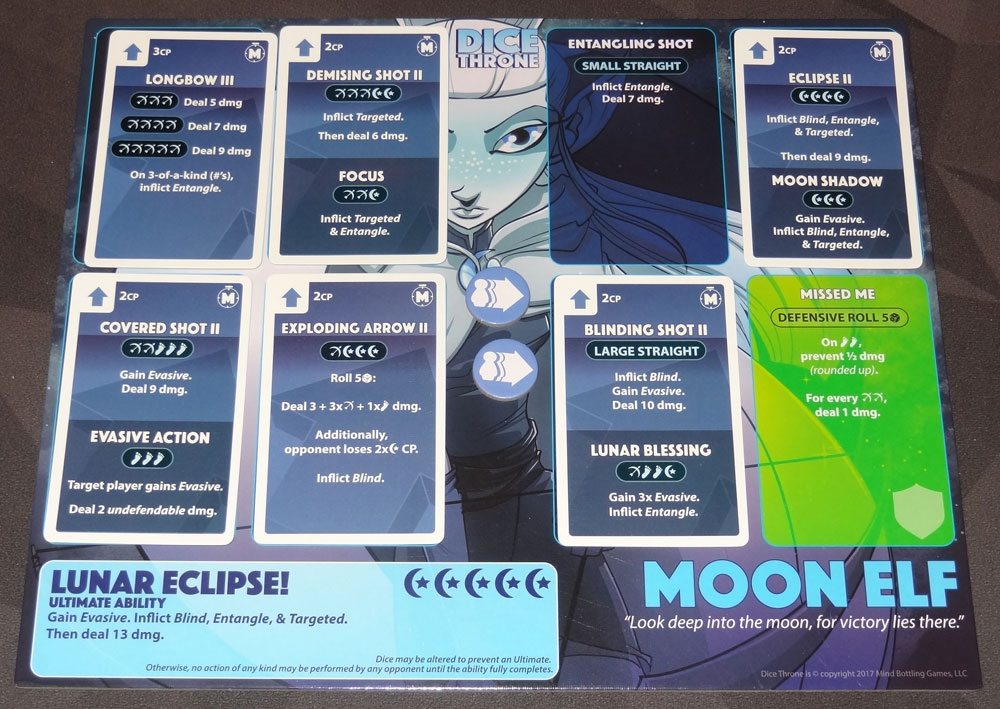
The upgrades are pretty fun: most of them will increase the effect of getting a particular combo, but some also add a second combo, so that you have even more options. Again, each hero is unique, so some characters have the ability to heal, some have the ability to avoid attacks, some have the ability to interfere with their opponent’s actions. But the other cards are also really great, and you’ll want to use them all, too: re-roll dice (or force your opponents to), move status effects around, make dice wild, and so on.
The one thing I didn’t care for quite as much was that the learning game is only for 2 players, because if you want to play the game with a bigger group, you don’t want to tell them that everyone has to learn by playing 2-player games first. I did try teaching 4 players using the simplified rules, but the other heroes simply need the CP and cards a lot more, so it didn’t make as much sense. I do think that if you’re playing with experienced gamers, you can probably skip the simplified rules and just go straight to the full game. The characters are ranked in the rulebook from simple to complex, so you can always give the less-experienced players some of the easier characters to start with.
Obviously there’s a lot of luck involved in the game, because the cards you draw and the dice you roll are random. However, there’s also quite a few ways to mitigate that luck: knowing when to sell cards for CP rather than hanging onto them until you can afford them, knowing when to take a guaranteed dice combo rather than risking it for a stronger one, and so on. Your strategy also shifts depending on who you’re up against: for example, the Shadow Thief has abilities that will cause you to discard cards or lose CP, so it’s less advantageous to save up CP then.
There’s also a little luck involved when you have more than 2 players, because the target of your attacks is also determined randomly. Again, you can use cards to manipulate that a little, but it does mean that making alliances to take down a particular player first won’t always work, and thematically can seem a little odd, when you can’t choose who you’re hitting. The 2-player game feels a little more strategic, and the more players you add, the more chaotic it can get.
The games can be quite exciting—I’ve seen more than one game with a surprise upset at the end, with the winner very close to being eliminated themselves. Of course, if you get knocked out earlier you do have to wait for everyone else to finish. Still, it can be quite entertaining watching the others fight it out—particularly if you were able to play a few nasty status effects on others that linger on past your own death.
Overall, I think Dice Throne is a fun battle game that is fairly easy to learn and allows for some fun tactics. It’s just what you’d want out of a dice-based fighting game, though I’d recommend skipping the “learning” game and just going straight to the full experience if you already have some experience playing modern games. Roxley Games and Mind Bottling Games will be launching a Kickstarter in January Q1 2018 for an expansion (already!) so I’ll be watching for that as well, and will report back if I get a chance to review it in time for the campaign.
Visit Roxley Games to pre-order a copy!
Click here to see all our tabletop game reviews.
If you’d like to stay up-to-date with all of our tabletop gaming coverage, please copy this link and add it to your RSS reader.
Disclosure: GeekDad received a copy of this game for review purposes.

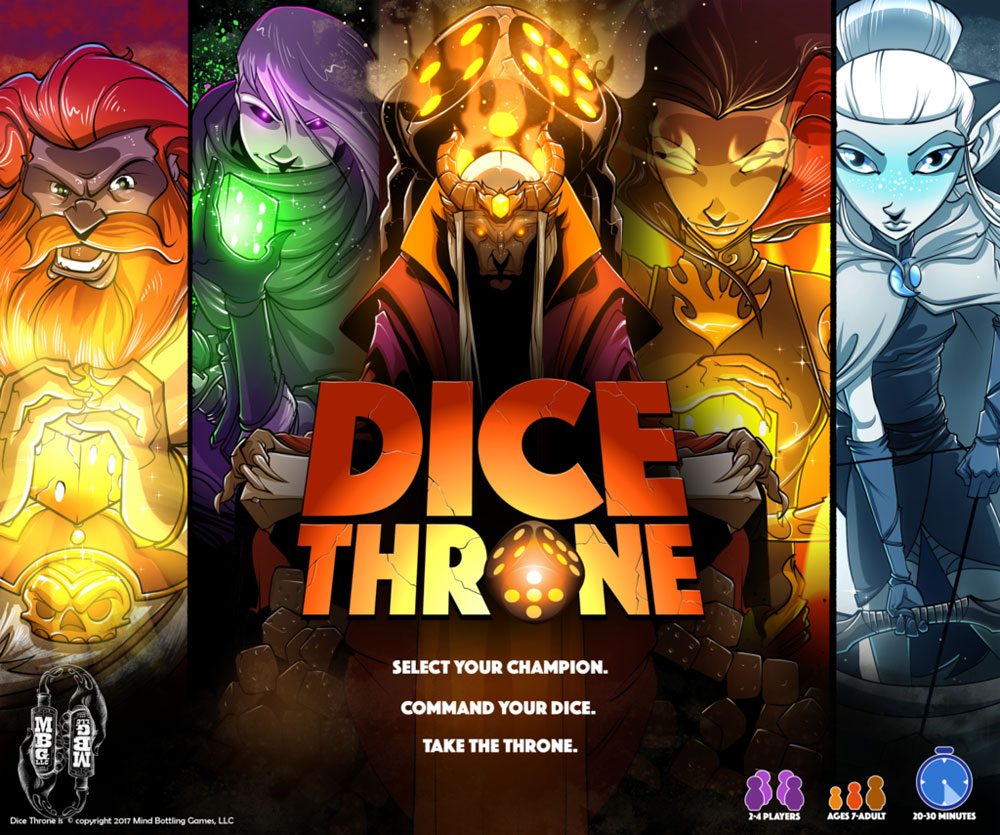
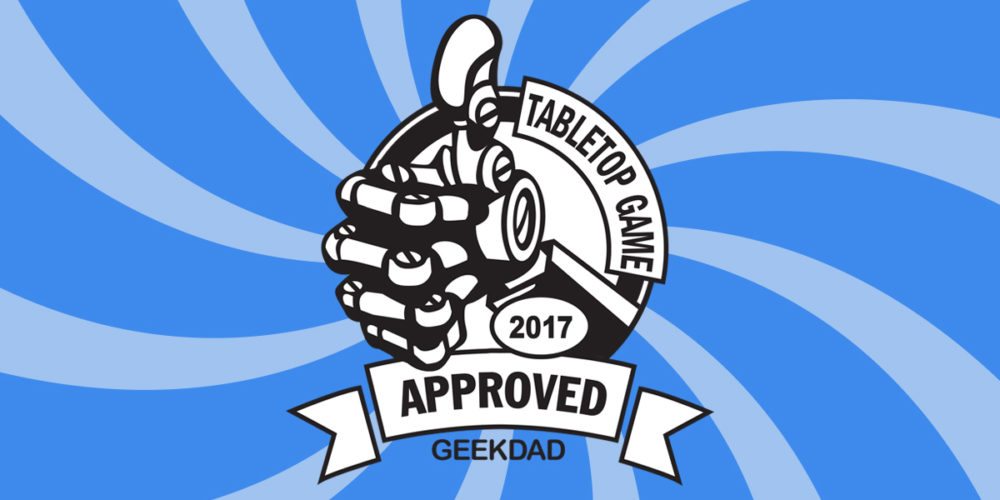



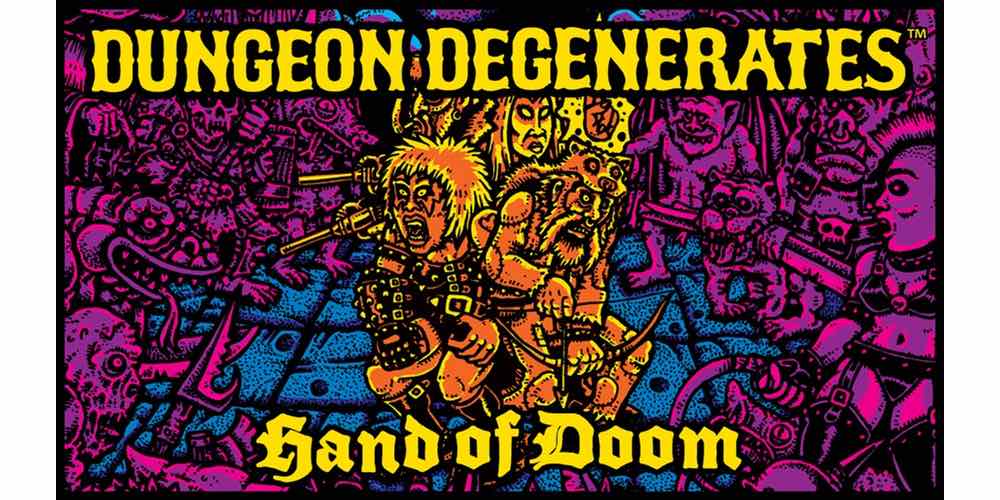

Thanks for the great review Jonathan! We have many plans for many years for expanding the hero pool and game modes of Dice Throne. Stay tuned! =D